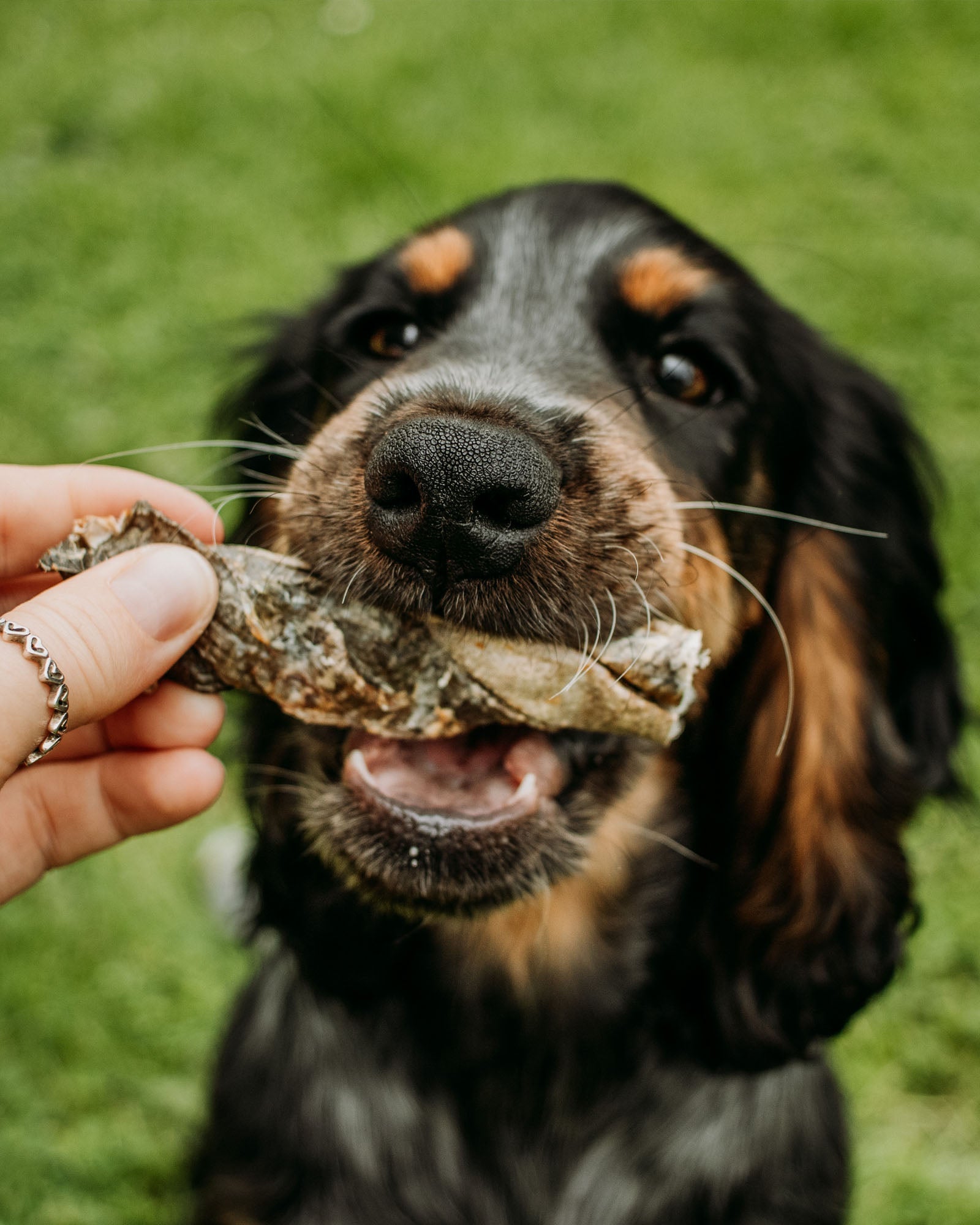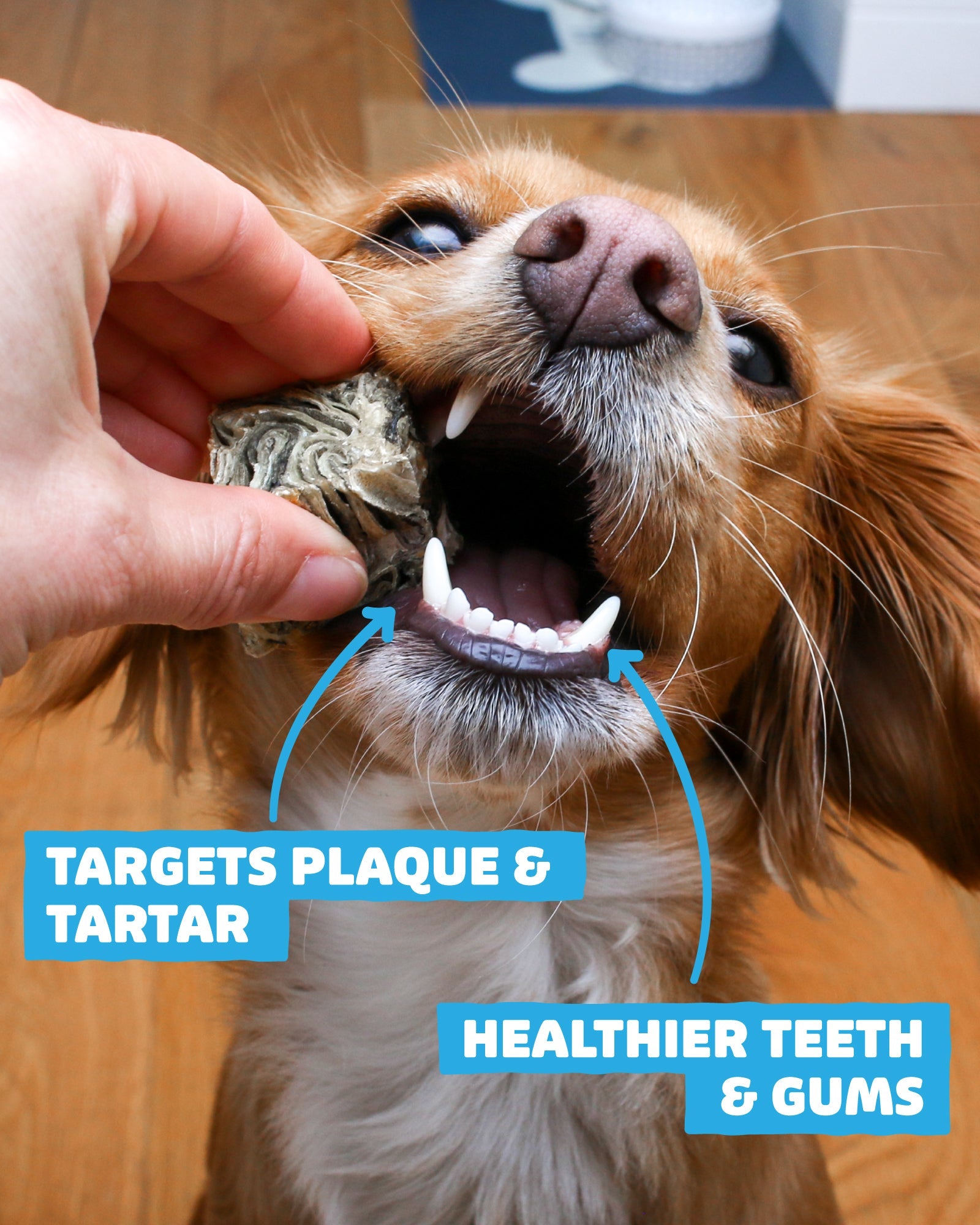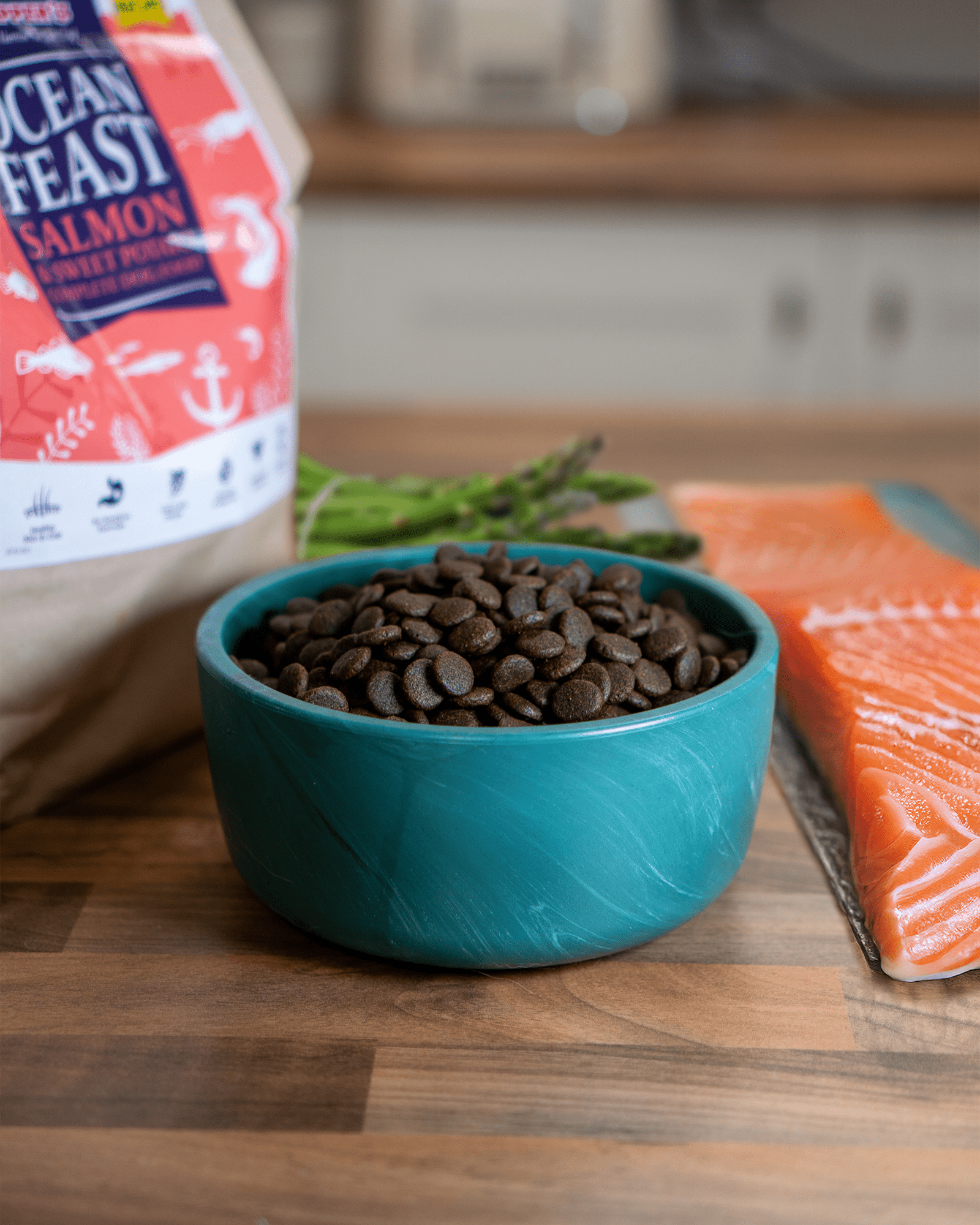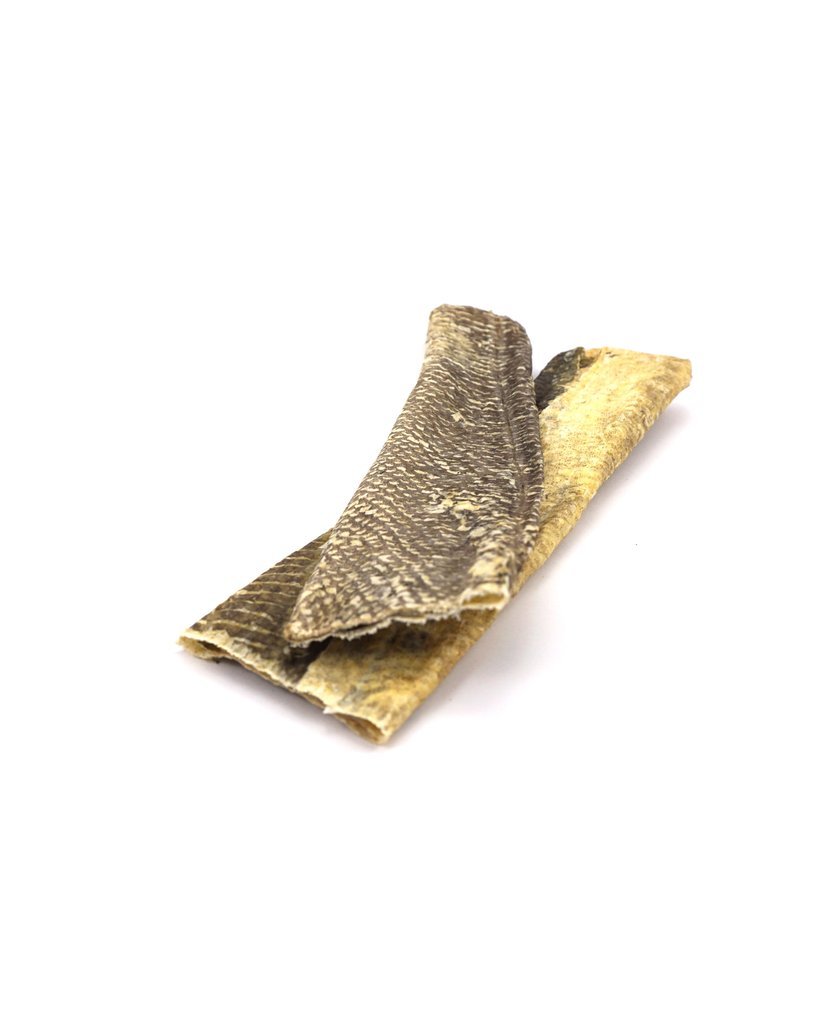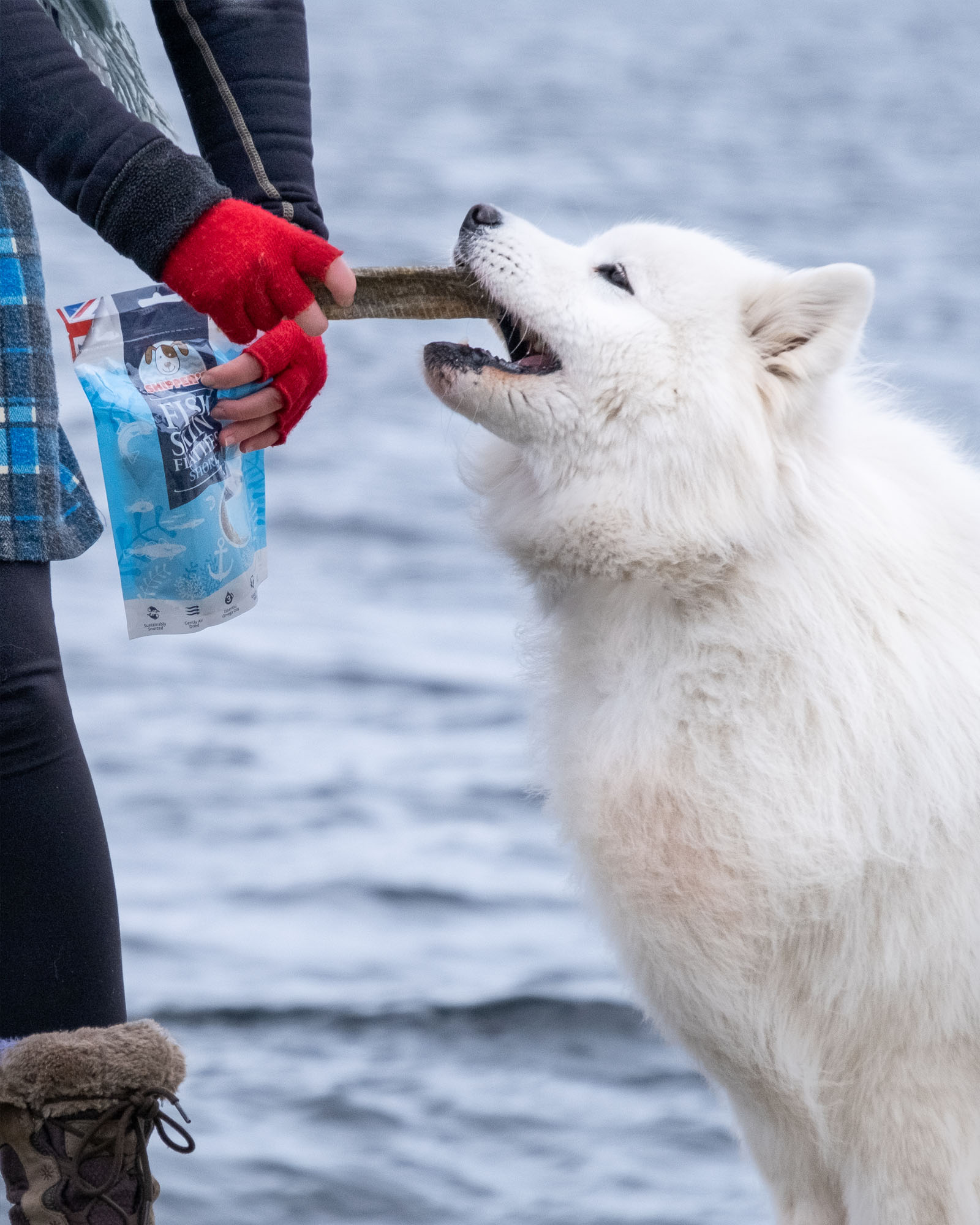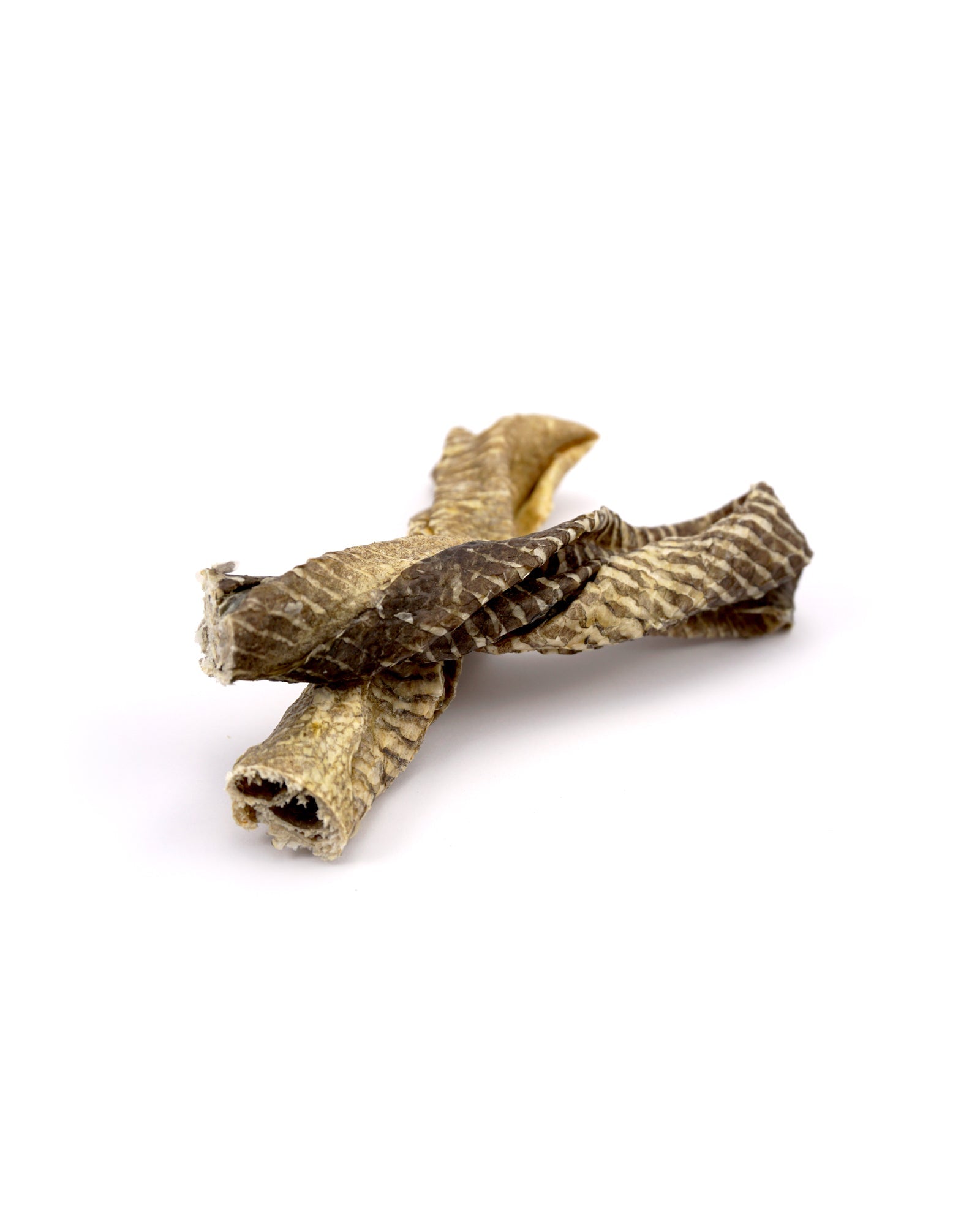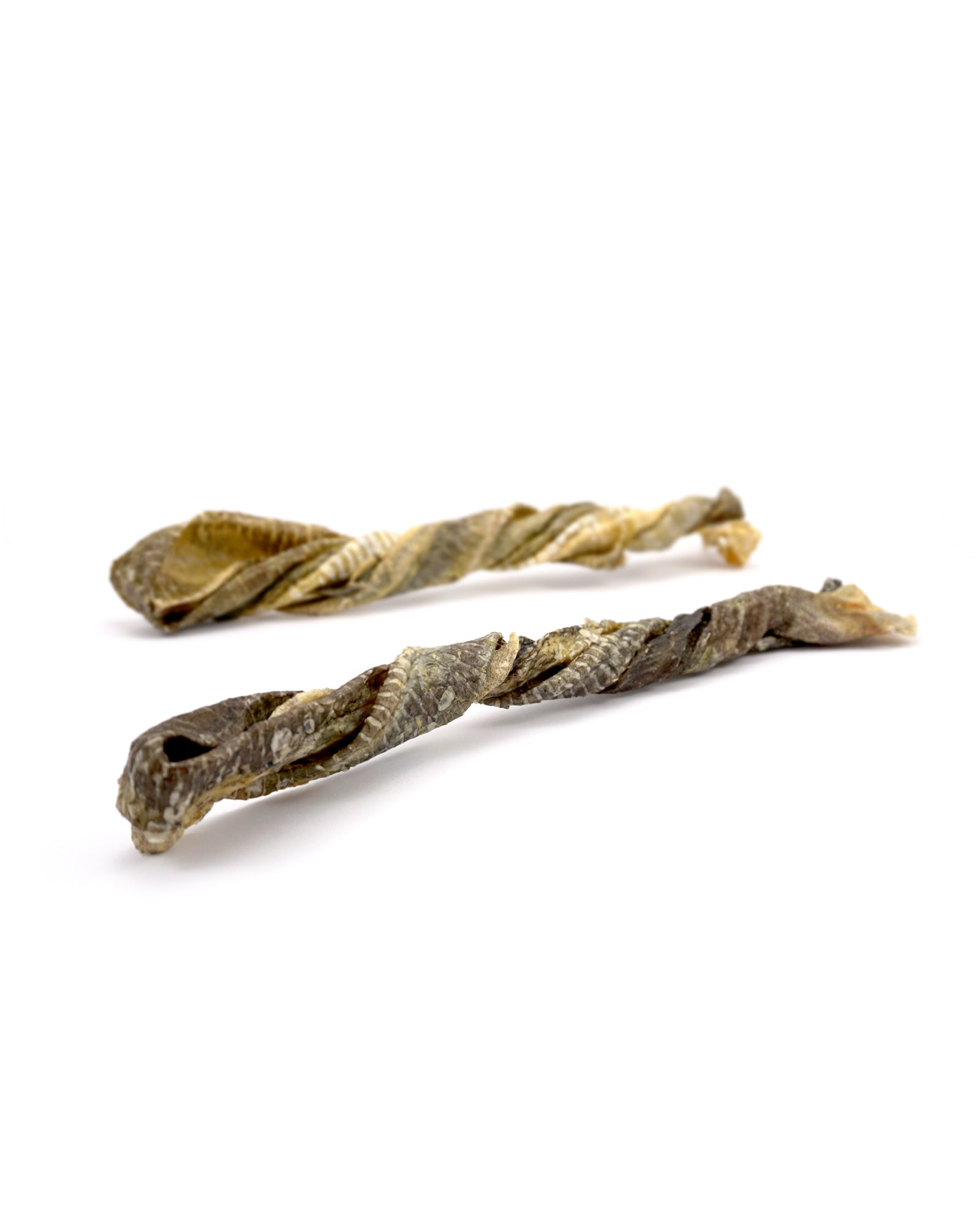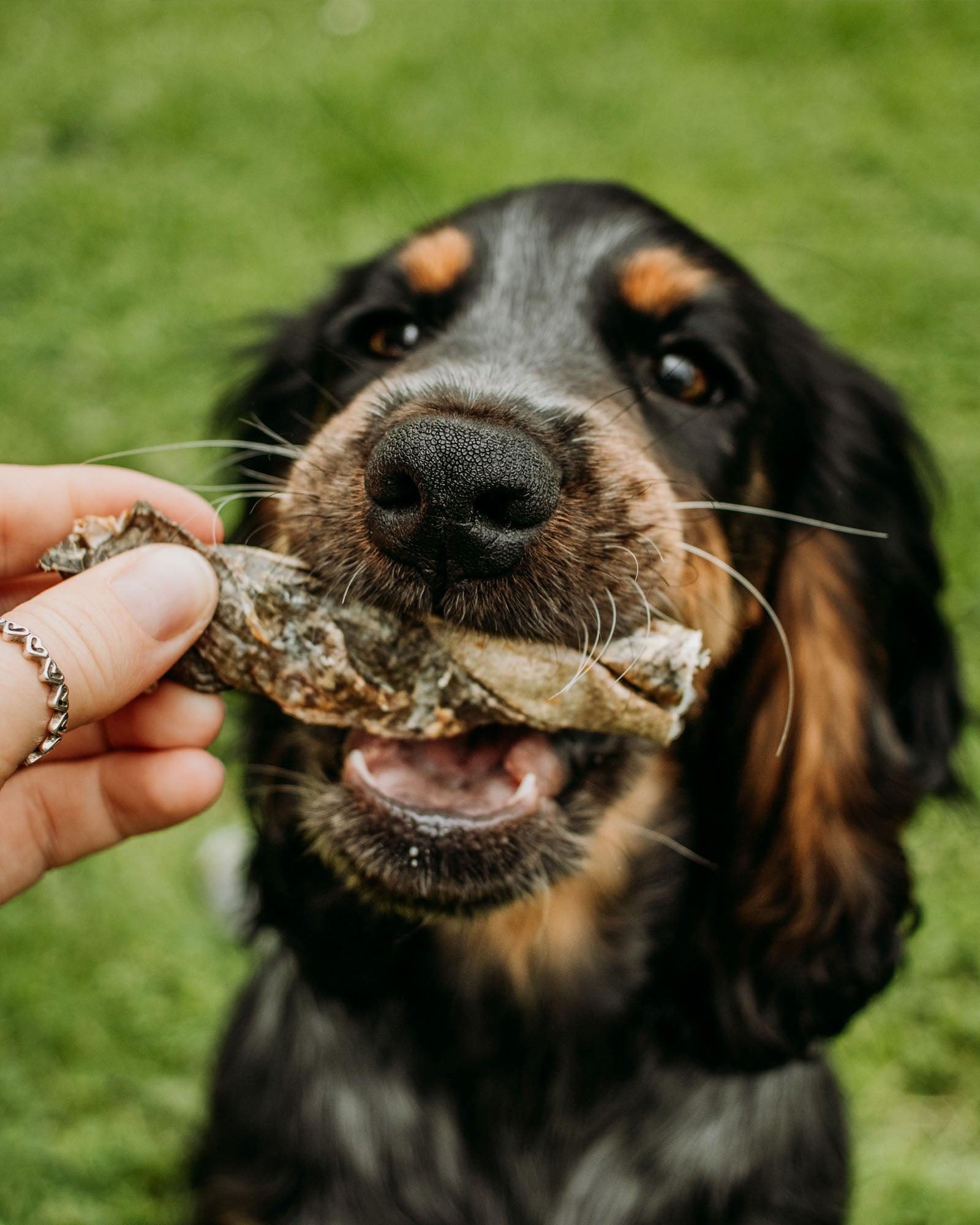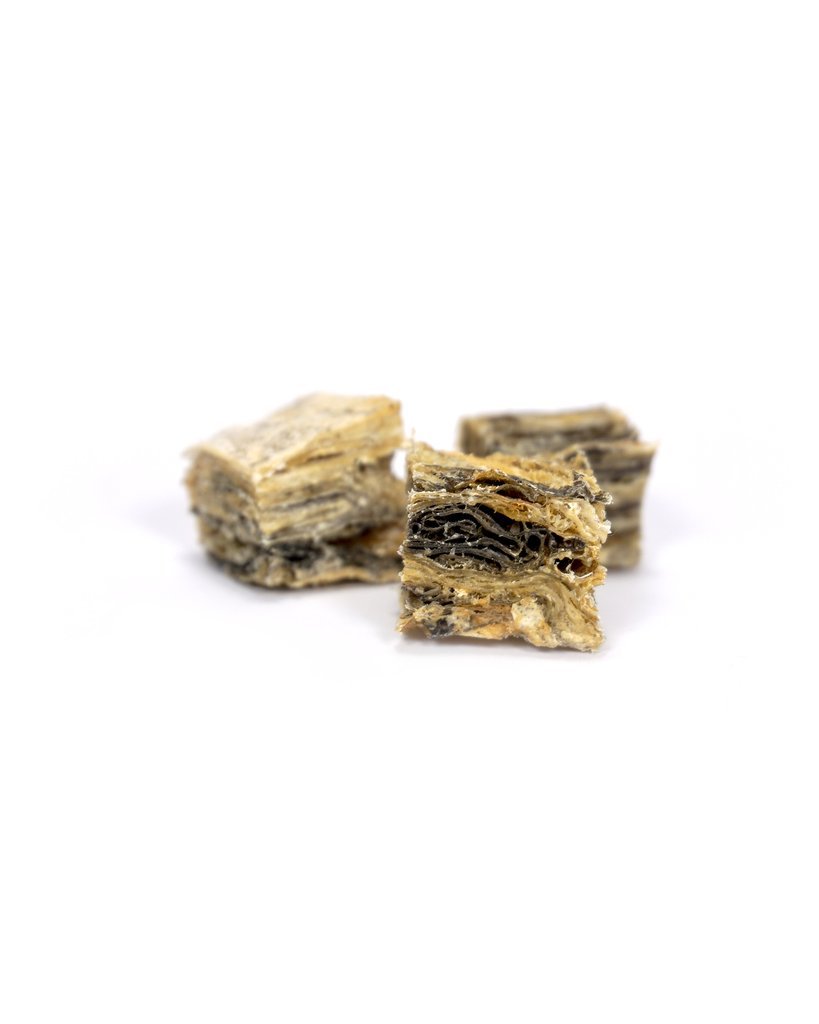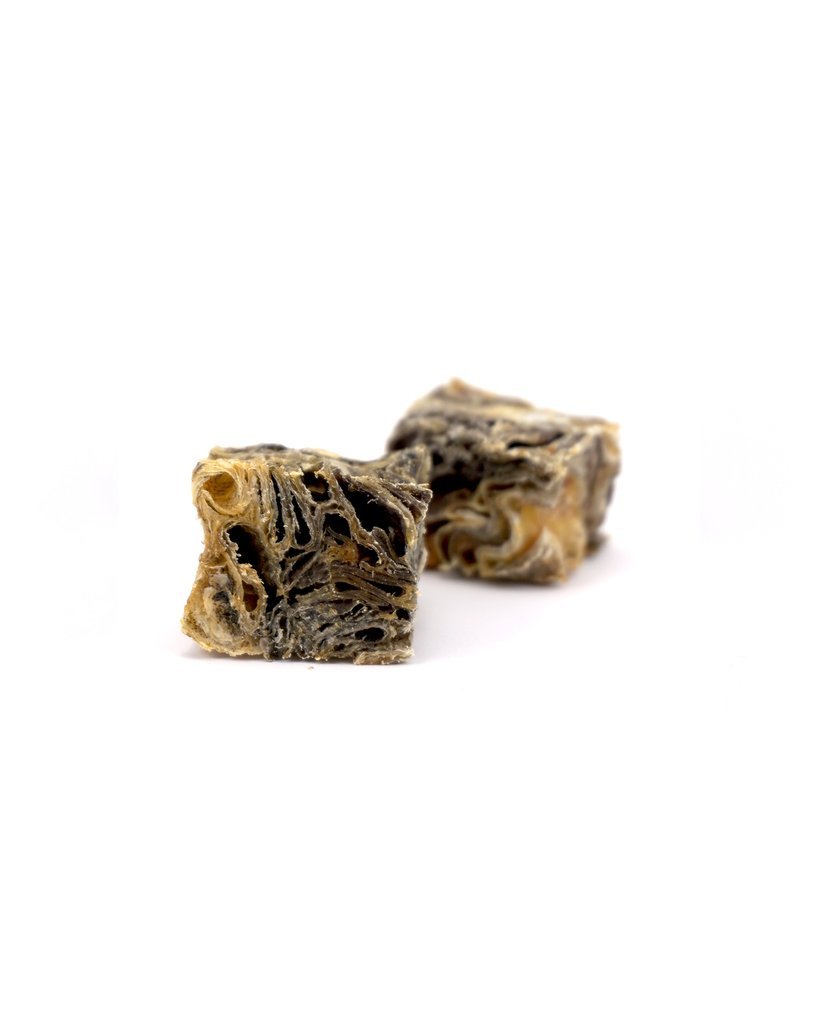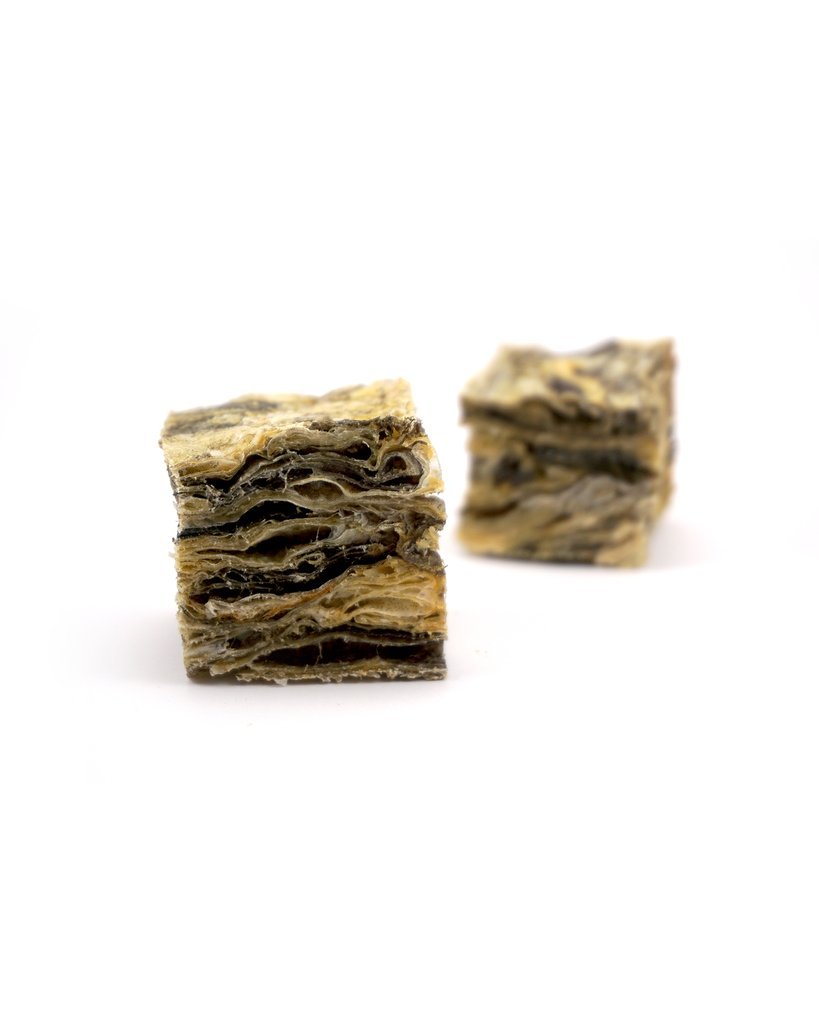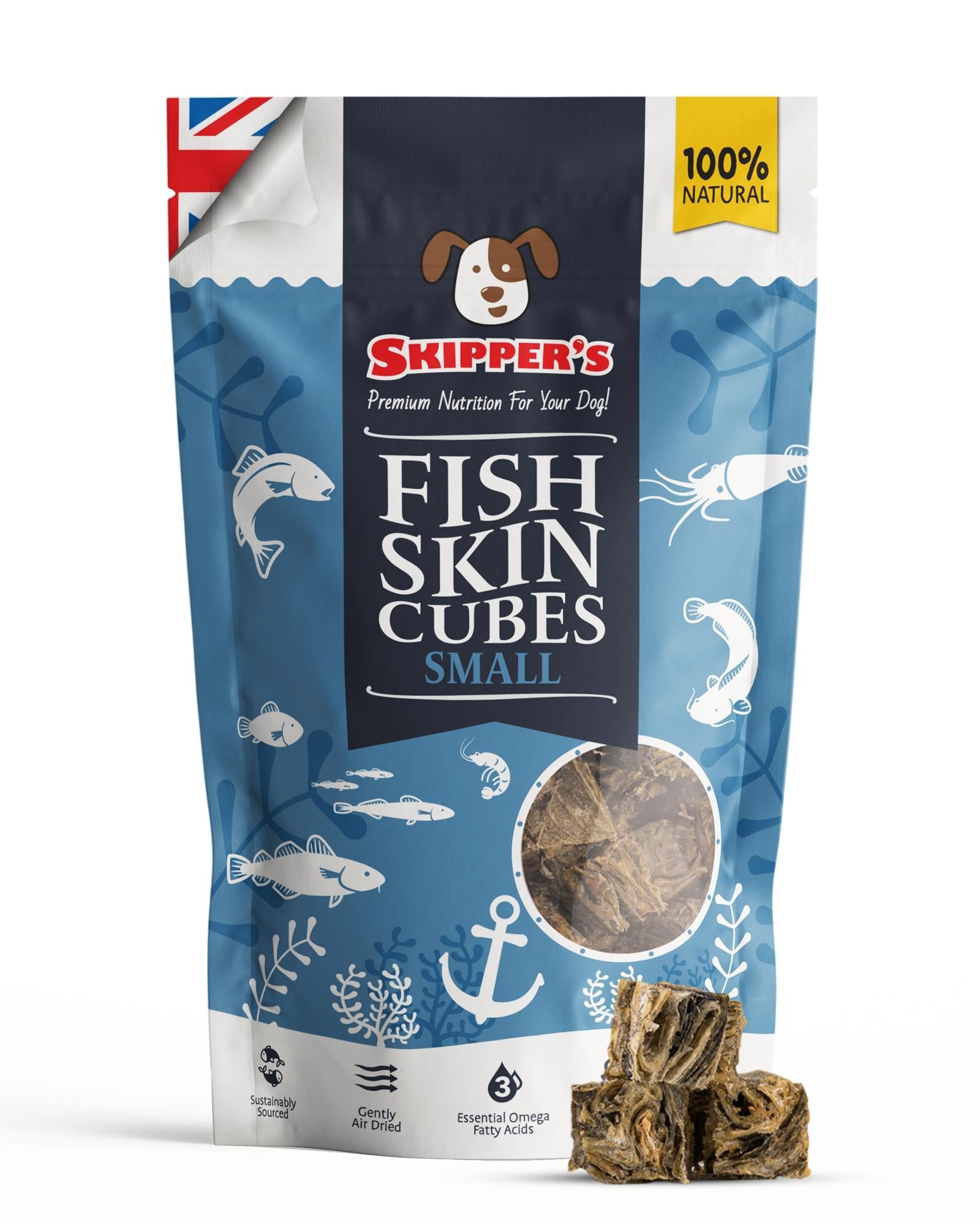Bringing a new puppy into your home is an exciting experience. With this, puppies can be nervous at the beginning simply due to the new environment, scents and people. Ensuring that your puppy feels safe, comfortable and happy is a priority.
Crate training a puppy can help establish a safe and comfortable space whilst also providing a way to manage their behaviour, especially during the early stages of their development.
Dog crates come in all sorts of fun designs and sizes, and can become a cosy little den for your furry best friend! If your dog feels happy in a crate, it can provide a safe and comfortable space for your pup to call their own, where they can snuggle up and relax.
Many people are intimidated by the idea of crate training, fearing it may be difficult or cruel, and crating your dog is not a necessity like food. However, AKC states, "Most veterinarians, trainers, and breeders recommend crate training dogs from a young age".
With the right approach and a little patience, crate training can be a positive experience for both you and your puppy.
Why crate training works (and when it's useful)
Crate training your puppy or dog is not for all dogs and owners. Taking into consideration other factors, such as whether the dog has had negative experiences with crates in the past or has separation anxiety, a crate may not be suitable. The critical part to remember is that crates are to be a safe haven for a dog and never to be used as punishment. Along with that, dogs should not be kept in a crate for long periods of time.
Dogs have natural ‘den instincts’ that drive them to seek out small, secure spaces to rest and feel safe. Crate training uses this instinct to create a positive association with the crate as their personal den.
As long as you are correctly using a crate with your dog, it can become a crucial step in their development and provide numerous benefits for both you and your furry friend. One of the most significant advantages of crate training is that it can help prevent destructive behaviours, such as chewing, digging, and scratching.
Benefits of crate training
Crate training is a popular method used by many dog owners to train their puppy or dog. It involves introducing a dog to a crate as a safe and comfortable space for them to rest and sleep in. Crate training your puppy or dog can provide numerous benefits for both you and your furry friend. Here are some of the top benefits of crate training a puppy.

Calms your dog when stressed
Dogs can experience stress and anxiety in various situations, whether due to loud noises, unfamiliar environments, or separation from their owners. In these situations, a crate can provide your pup with a sense of security and comfort that can help reduce their stress levels and calm them down.
When your dog is feeling stressed, retreating to a crate can give them a sense of safety and security. By having a designated space just for them, they can feel more in control of their environment and less overwhelmed by their surroundings. Crate training can be especially helpful during situations where your pup is feeling overwhelmed or overstimulated, such as during a thunderstorm or fireworks.
In addition to providing your dog with a safe and secure space, crate training can also help promote positive behaviours and reduce anxiety. When your pup is properly crate trained, they learn to associate their crate with positive experiences, such as treats, toys, and praise. Over time, this positive association can help your dog feel more at ease in their crate and more relaxed overall.
It's important to note that while crate training can be an effective tool for calming your dog when stressed, it's not a substitute for proper socialisation and training. If your dog is experiencing chronic anxiety or behavioural issues, it's essential to work with a professional trainer or veterinarian to develop a comprehensive treatment plan.
Helps with toilet training
One of the most challenging aspects of raising a puppy is toilet training. However, crate training can be an effective tool to help with this process.
Dogs are naturally den animals, meaning they prefer to keep their living area clean. By using a crate, you can take advantage of this natural instinct and help teach your puppy to hold their bladder and bowels until they're taken outside to go potty.
When crate training for toilet training, choosing a crate that's the appropriate size for your pup is essential. The crate should be large enough for your puppy to stand up, turn around, and lie down comfortably, but not so large that they have room to soil one end and sleep in the other.
Over time, your puppy will learn to associate going potty with being taken outside and will be more likely to hold it until they're given the opportunity to go outside.
It's important to note that crate training alone is insufficient to toilet train your puppy. Consistent training, positive reinforcement, and patience are key factors in toilet training your pup successfully.
Make puppies adapt in new environments
Dogs are creatures of habit and can often become anxious or stressed when placed in unfamiliar environments. However, crate training can help puppies adapt to new surroundings and feel more comfortable and secure.
When you bring your puppy to a new environment, such as a new home or a hotel room, their crate can provide them with a familiar and comforting space that's just for them. Having a designated area that smells like home and feels safe makes your puppy feel more relaxed and less overwhelmed by their new surroundings.
In addition to providing a sense of security, crate training can also help your puppy feel more independent and self-assured. Your pup can learn to self-soothe and feel more in control of their environment by having a place of their own. This can be especially helpful during times of stress or change, such as having lots of people around for a BBQ or travelling or during periods of separation from their owner.
It's important to note, however, that crate training should never be used as a substitute for proper socialisation and training. It's essential to expose your puppy to various environments, people, and animals and to work with a professional trainer to ensure they develop good behaviour and social skills.
Safe place when dog is unsupervised
It's not always possible to be with your dog every moment of the day. Whether you're at work or running errands, there
will be times when your dog is home alone. During these times, a crate can provide your dog with a safe and secure place to rest and relax.
A crate can prevent your dog from getting into potentially dangerous situations when you're not there to supervise them. For example, if left alone and unsupervised, a curious puppy may chew on electrical cords or ingest toxic substances. By using a crate, you can provide your dog with a safe space to rest and play without the risk of injury or illness.
In addition, a crate can also prevent your dog from engaging in destructive behaviours such as digging, chewing, or barking excessively. These behaviours can be a sign of anxiety or stress, and a crate can provide a secure and comforting environment for your dog to relax and feel safe.
It's important to note that a crate should never be used as a form of punishment or isolation. Instead, it should be used as a positive tool to help your dog feel safe and secure when unsupervised.
Reduces risk of separation anxiety
Separation anxiety is a common problem for many dogs, especially those that have not been adequately socialised or trained. Dogs with separation anxiety can become anxious, destructive, or even aggressive when left alone for extended periods of time. According to RSPCA, eight out of ten dogs find it hard to cope when left alone.
By providing a crate as a safe and secure space for your dog, you can help them feel more comfortable and less anxious when you're not there. The crate can serve as a "home base" that your dog can retreat to when they're feeling stressed or overwhelmed.
To reduce the risk of separation anxiety, it's important to gradually introduce your dog to their crate and make it a positive experience. Start by placing treats such as Whitefish & Herb Slices and toys in the crate and encouraging your puppy to explore it independently. Over time, you can gradually increase your dog's time in the crate, always providing positive reinforcement and rewards.
A crate can help your dog feel safe and secure, even when you're not there. By providing a comfortable and familiar space, you can reduce the risk of separation anxiety and help your dog become more confident and independent.
If your dog already has separation anxiety, working with a professional trainer or behaviourist is important to address the underlying issue. With patience and positive reinforcement, however, crate training can be a helpful tool in reducing the risk of separation anxiety in dogs.
Choosing the right crate and setup
Your puppy’s crate should be big enough for them to stand up, turn around, and lie down comfortably, but not so large that they can use one end as a toilet. Crate comes in various types, wire, plastic, and soft-sided, each has their own benefits. Wire crates offer ventilation and visibility, whilst plastic crates can provide a cosier, den-like feel.
You should place the crate in a quiet room away from direct sunlight and heavy foot traffic. However, ensure the crate placement isn’t isolated, as your puppy should still feel part of the family. In addition, to make the crate more inviting and cosy, use comfortable bedding, favourite blankets and safe toys, even placing a piece of clothing with your scent on top of the crate can help your puppy feel a lot more at ease.
Furthermore, ensuring the safety of your puppy or dog is crucial. Remove any collars, harnesses, and leads before crate training or crating them to prevent snagging or injury.
Easy steps to crate train your puppy
Many pet owners may feel intimidated by crate training, but crate training your puppy doesn't have to be complicated or stressful. By following a few simple steps, you can help your puppy feel comfortable and secure in their crate in no time.

STEP ONE: Choose the right crate for your puppy
Your puppy's crate should be big enough for them to stand up, turn around, and lie down comfortably. However, it should not be too big, as this can encourage your puppy to use one end of the crate as a toilet. Place the crate in a quiet room and away from direct sunlight. With that, ensure that the crate will be comfortable for your dog by using a dog bed or blanket.
STEP TWO: Create a positive association to the crate
It's essential for you to help your dog associate the crate with positivity. You can do this by making the crate a fun and exciting place. Leave the crate door open and place your puppy's favourite toy and a treat, such as Dog & Puppy Training Treats, inside the crate.
By placing toys and treats, you will encourage your puppy to explore their crate. Remember to praise them when they do.
STEP THREE: Get your dog "naked" for safety
To ensure your puppy is as safe as possible, remove their collar, harness and leash if they have any of those on. If any of these are kept on, they can get stuck and cause harm to your puppy.
STEP FOUR: Closing the crate door
If your dog appears to be happy within the crate after placing toys, treats and their food inside a few times, you can start to close the crate door gently (but do not lock it). To ensure your dog stays calm, have their favourite toy, food or treats inside with them.
STEP FIVE: Increase the time spent in the crate
Each dog is different, and it may take a week or more for your puppy or dog to get fully settled inside the crate. To help your dog feel more at ease with being in the crate for more extended periods, you can introduce long-lasting treats, such as Fish Finger Skins or a deliciously filled Kong.
STEP SIX: Locking the crate door
Once your dog is comfortable and confident in the crate for more extended periods, you can begin to lock the crate door for short periods with you still inside the room. You will gradually increase this time but do not overdo it, as it can lead to negative consequences. Remember to reward your dog with positive reinforcement.
STEP SEVEN: Leaving the room
Remember, crate training should always be a positive and gradual process with patience, consistency, and positive reinforcement with delicious treats. Soon enough, your dog will feel comfortable in the locked crate for more prolonged periods. At this stage, you can begin leaving the room for short periods and then build to leaving for more prolonged periods until your puppy is comfortable staying in the crate overnight.
How long can a puppy stay in a crate

The amount of time a puppy can safely stay in a crate depends on their age, size, and physical needs. It's recommended that dogs under 14 weeks can not be crated for longer than 3/4 hours, and dogs older than 17 weeks can not be crated for longer than 6 hours. Puppies should be crated for a shorter time since they have smaller bladders and may need to go outside more frequently to relieve themselves.
It's important to note that these are general guidelines, and every dog is different. Some dogs may be able to tolerate longer periods in a crate, while others may become anxious or uncomfortable after just a short period. Additionally, ensuring your puppy has plenty of opportunities to exercise, play, and go to the bathroom outside the crate is essential.
If you need to leave your puppy crated for an extended period of time, consider arranging for someone to check on them and take them outside for a walk or bathroom break. Alternatively, consider using a dog daycare or hiring a dog walker to provide regular intervals for your puppy.
Remember, a crate should be a safe and comfortable place for your puppy to rest, not a long-term solution for confinement. Using the crate as a training tool is essential to help your dog feel secure and comfortable when left alone. Still, it's equally important to provide your dog with plenty of socialisation, exercise, and interaction with you outside of the crate.
Common crate training challenges and how to fix them
Puppy cries or whines
It’s normal for puppies to cry or whine when first introduced to the crate, especially if they’re not used to being alone. Avoid letting them out whilst they’re whining, as this teaches them that crying gets attention. Wait until they’re calm and quiet before opening the crate and reward that calm behaviour with praise or a small treat.
Accidents inside crate
If your puppy has an accident inside the crate, it may be because the crate is too large or they’ve been left too long. Ensure the crate is the right size, just big enough for them to stand, turn around, and lie down comfortably. Take them outside regularly and clean any accidents thoroughly to remove lingering odours that might encourage repeat incidents.
Resistance, refusal, fear of crate
If your puppy avoids entering the crate, never force them. Instead, build positive associations by feeding them near or inside it, adding favourite toys, or tossing in treats. Keep sessions short and upbeat. Over time, your puppy will begin to see the crate as a safe and inviting space.
Regression after progress
Sometimes, puppies who have been crate-trained start resisting again. This can happen after changes in routine, a move, or time away from the crate. Revisit the basics, keep sessions short, reintroduce treats and praise, and maintain consistency. Avoid scolding your dog, and remember, patience helps rebuild confidence faster.
Barking, anxiety, destructive behaviour
Excessive barking, scratching, or biting at the crate can be signs of stress or boredom. Make sure your puppy gets enough physical exercise and mental stimulation before crating. Offer safe chews, like Skipper's Fish Finger Skins or filled Kongs, to keep them occupied. If anxiety persists, slow down the process and gradually increase their time.
Use of calming aids
Calming aids can make crate time more comfortable. You can try a pheromone diffuser, a familiar blanket with your scent, or gentle background noise like white noise or calming music. These elements help create a peaceful atmosphere and reduce your puppy’s anxiety whilst crated.
Alternatives to crate training
Crate training isn’t the only way to provide your puppy with a safe space. Some dogs, especially those who are anxious or still adjusting to their new home, may be more comfortable with a bit more freedom. If you find that your puppy isn’t quite ready for full crate training, here are a few gentle alternatives that can work just as well.
Playpen or gated areas
A playpen or gated area can be a great middle ground for puppies who need space to move around, whilst still staying out of trouble. It allows them to play safely without access to the whole house, which helps prevent accidents and unwanted chewing when you’re not watching closely.
Indoor confinement and supervision
You can also set up a small, secure area inside your home, such as the kitchen, where your puppy can spend time under your supervision. This option lets them explore safely whilst learning household boundaries and good manners, without feeling confined.
A safe zone
Creating a designated space or room for your dog can give them a sense of security and independence. Furnish it with a comfortable bed, their favourite toys, and fresh water. You can even add a dog-safe calming scent to make the space extra relaxing. This safe zone can be especially helpful during stressful times, such as bonfire night or when guests visit, giving your puppy somewhere familiar to retreat to and unwind.
How can Skipper's training treats help with crate training a puppy?
Crate training a puppy can be a challenging task. Fortunately, using Skipper's training treats as something positive and enticing can help make training your puppy much easier and more enjoyable for you and your furry friend.
One of the first big hurdles you and many other dog owners need to cross is encouraging your puppy to enter their crate willingly. This hurdle can easily be passed with the help of some irresistible-smelling training treats. Training treats such as Skipper's Dog & Puppy Training Treats are a long-time customer favourite that has a delicious taste of Salmon that your puppy will adore. Another delicious training treat is Skipper's Whitefish & Herb Sausages. Since these are soft treats, these sausages can easily be torn into pieces as tiny as you require, making them a convenient and versatile treat perfect for all-sized dogs. Finally, and just as importantly, these training treats are low in fat, reducing the chances of overfeeding and your puppy gaining weight.
How long does it take to crate train?
Every puppy learns at their own pace. Some may take to the crate almost straight away, whilst others need a little more time and reassurance. The key is to go slowly, stay consistent, and make the crate a positive, comfortable place for your puppy to be.
Typical timelines (days to weeks)
On average, crate training can take anywhere from a few days to a few weeks. Some puppies are confident and adapt quickly, whilst others may need more gradual introductions before they’re comfortable spending longer periods inside the crate. It’s important not to rush the process. Patience always pays off!
Factors affecting speed (temperament, consistency)
Several factors can influence how quickly your puppy takes to crate training, including their age, temperament, previous experiences, and your daily routine. Consistency is one of the biggest factors for success. Keeping a regular schedule for crate time, feeding, and toilet breaks helps your puppy understand what to expect, making them feel more secure and confident.
When to seek professional help (trainer, behaviourist)
If your puppy shows signs of distress, fear, or extreme anxiety when near the crate, it may help to speak with a professional dog trainer or canine behaviourist. They can assess what’s causing the problem and provide guidance tailored to your puppy’s needs. With expert support, even the most hesitant pups can learn to feel comfortable and relaxed in their crate.


